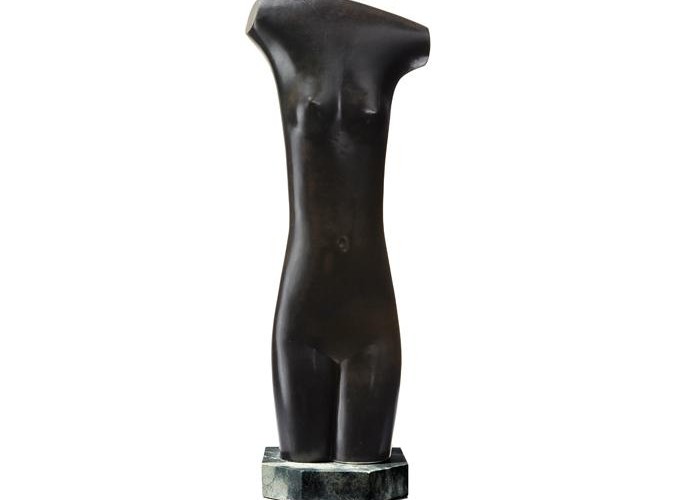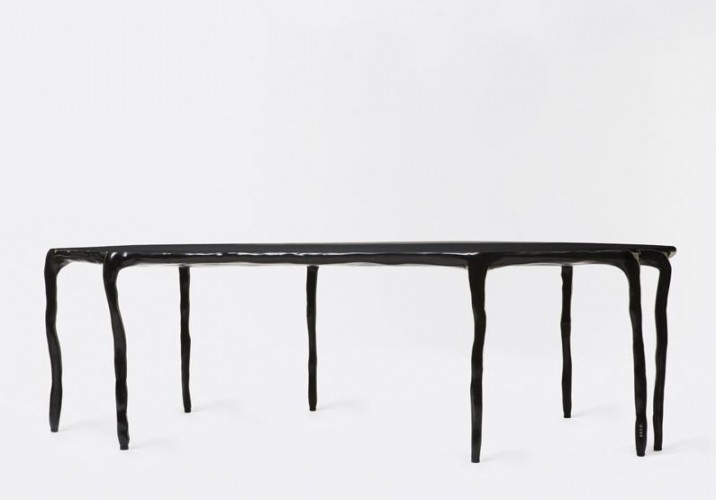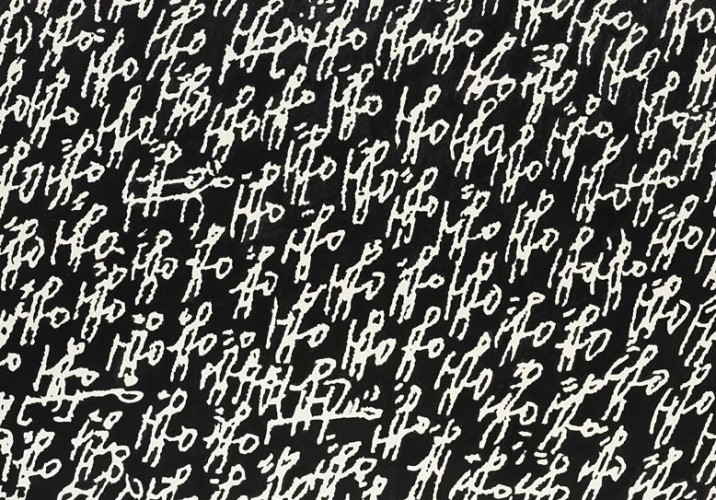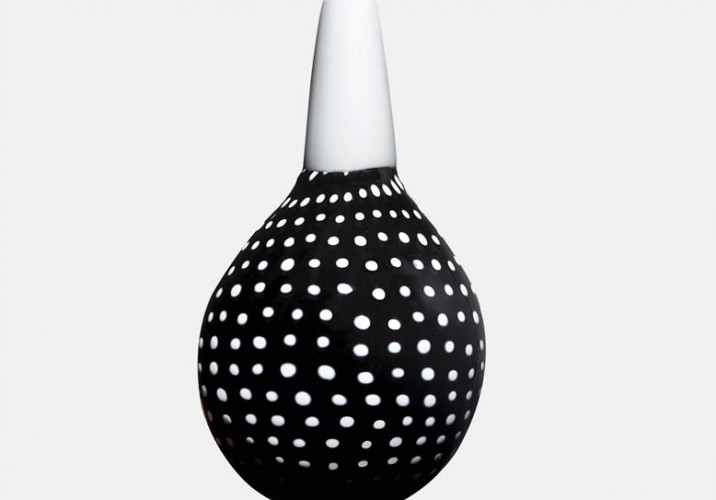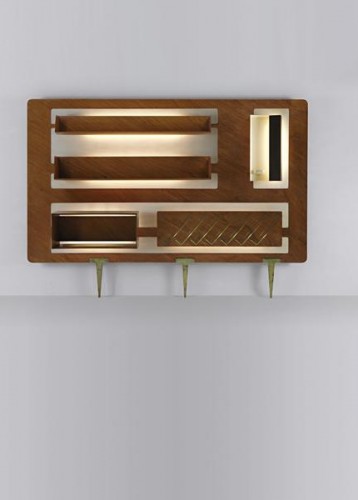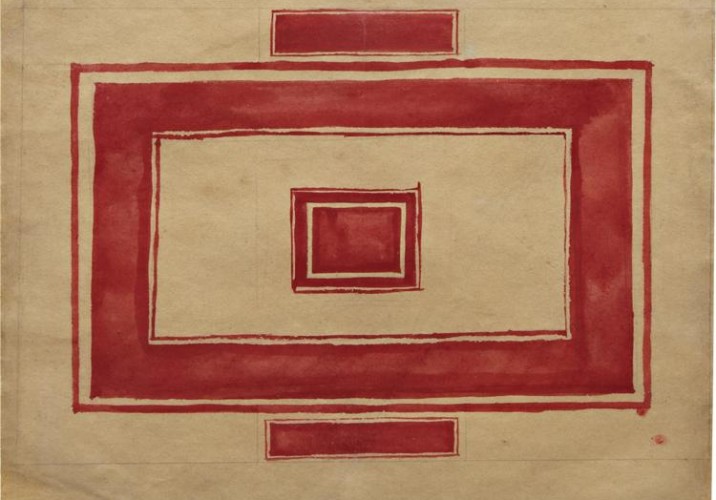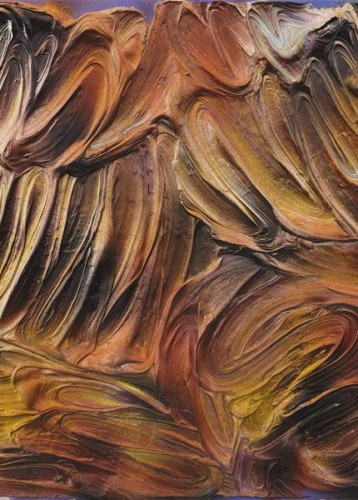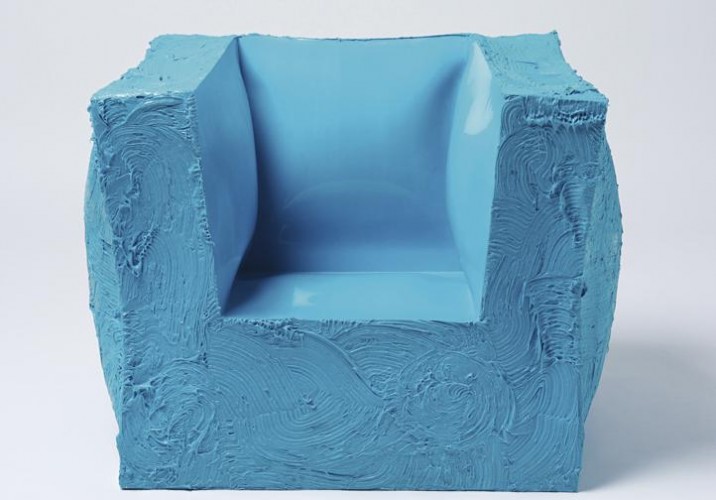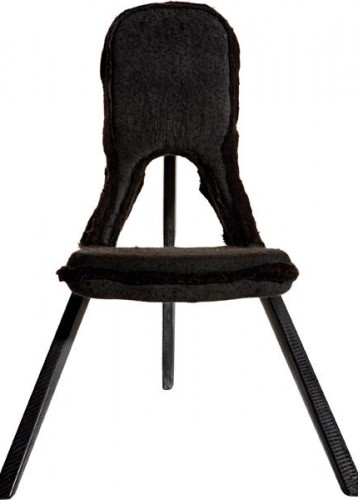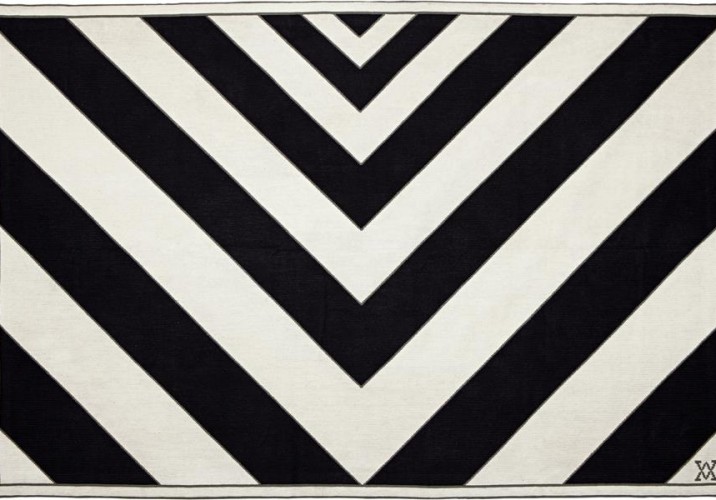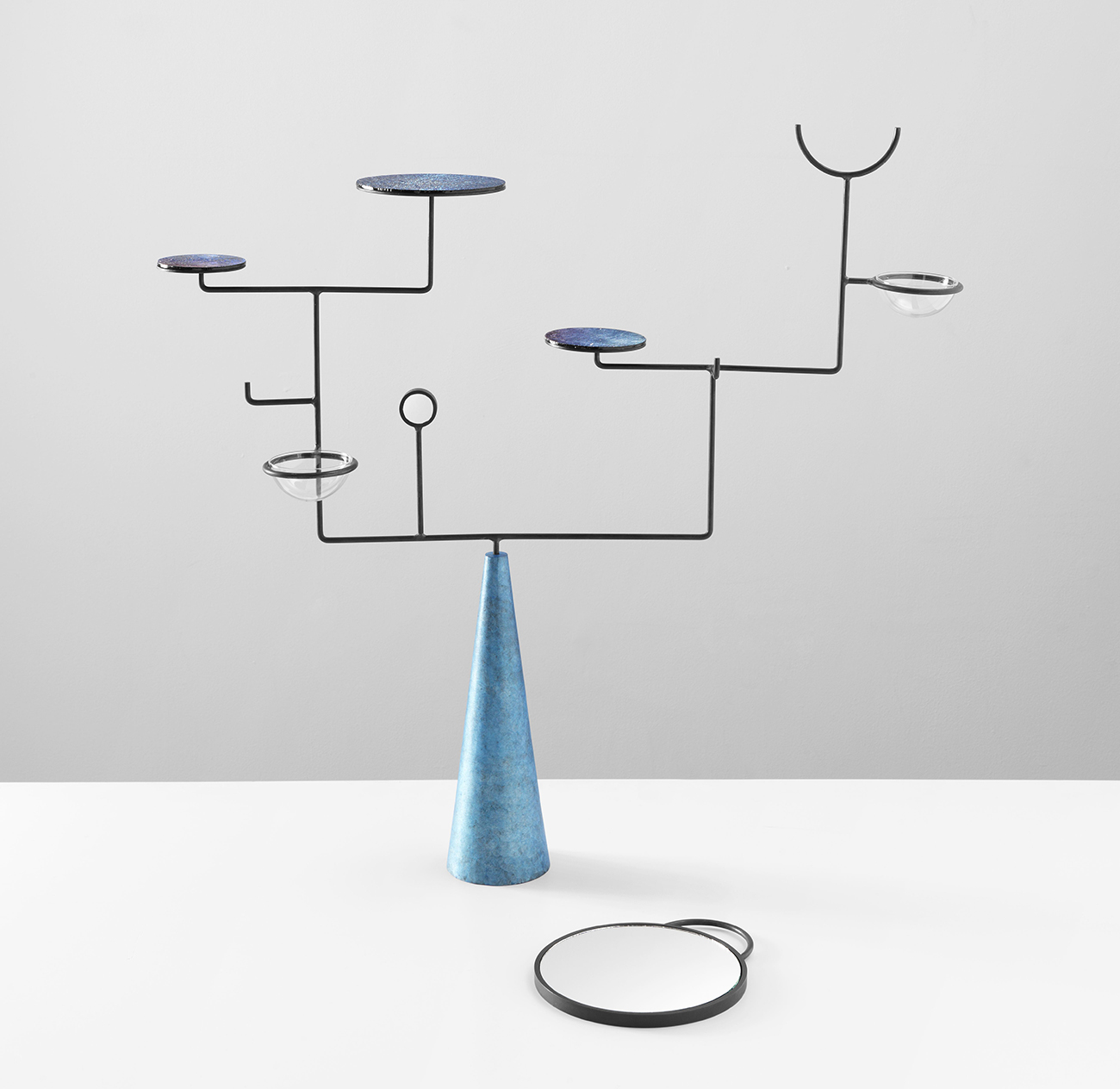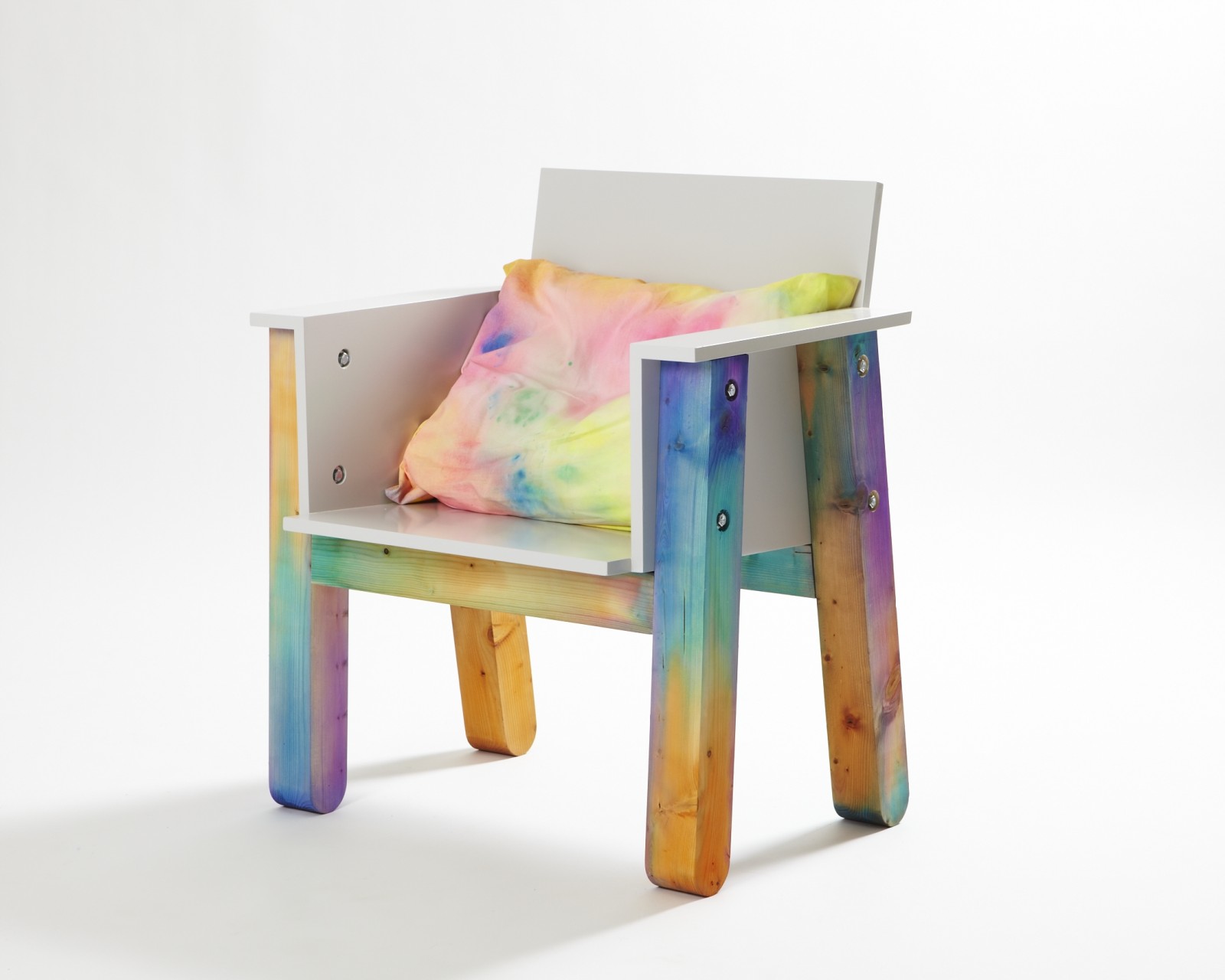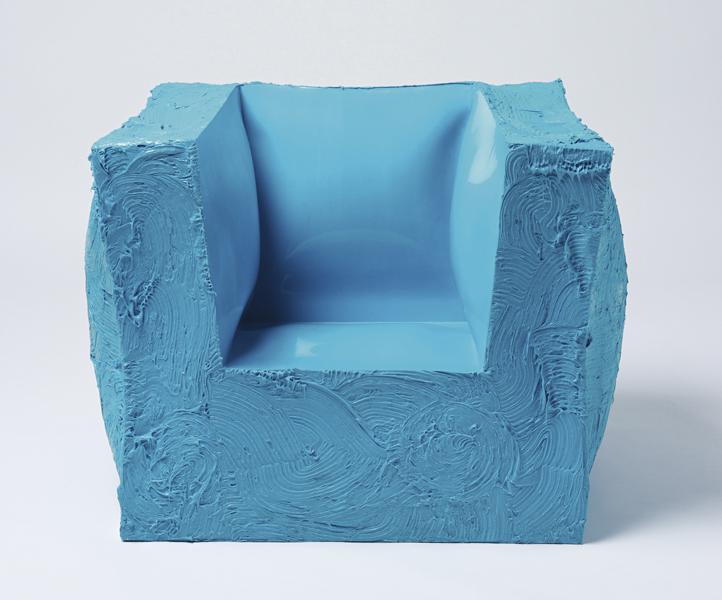
10.17.12
Sighted
Moss: Dialogues Between Art & Design Auction
Yesterday at Phillips de Pury in New York, the auction “Moss: Dialogues Between Art & Design” raked in more $5 million and smashed records for work by the likes of Maarten Baas, Hella Jongerius, and Patricia Urquiola. But while we’re always pleased to see design taken a bit more seriously, it wasn’t this auction’s star power but rather its conceptual conceit that intrigued us so. Curated by Murray Moss — with many of the selections coming from Moss’s own personal collection — the auction paired art and design pieces that seemed to share a common DNA, whether by virtue of material, technique, or appearance. The pairings were surprising and lovely, with the curves of Mattia Bonneti’s plump purple velvet sofa echoing Luciano Castelli’s reclining red nude, or the colored striations of Julien Carretero’s To Be Continued bench causing the same sense of vertigo as Doug Argue’s obsessive lines in (Untitled): Strata, 2011. (You can view the full catalog for yourself online here.) Perhaps best of all, the catalog was prefaced by an unusually personal story from Moss himself, who can seem a bit of a cipher to those not in his inner circle. We found the whole thing so interesting we’ve reprinted it in full here. Read on below, then click through our slideshow to see some of the highlights from last night.
Text by Murray Moss
“Moss: Dialogues between Art & Design will reveal a highly subjective, autobiographical approach to the pairing of Art and Design at auction. It’s only fair to give you a little autobiographical history.
“Born a fraternal twin (I have a lovely sister), I’ve always been fascinated by the phenomena of ‘zygosity’, the term used to indicate the degree of identicalness in the genome of twins. Although genetic similarities between my sister and I are apparent, there are wide swings in zygosity. Those similarities and differences have always intrigued me.
“In this auction I’d like to celebrate the possibilities of zygosity—or at least fraternity—between Art and Design. My obsession with objects and my (Sergei) Eisensteinian affinity for montage (the juxtaposition of two or more disparate works which thereby create a tertium quid, or third thing, that makes the whole greater than its parts), surfaced when I was eight-years old, having decided to take matters into my own hands and re-decorate my bedroom. It was a nice square room in an almost-North-Side Chicago manse, circa 1900. I decided on an ‘Oriental’ motif, due to the fact that the only ‘showroom’ I had ever visited was the Golden Pheasant, the Chinese restaurant where we ate every Sunday. The restaurant had a kind of gift shop filled with accessories. From this one resource I made my first design selections: a pair of porcelain courtiers, a clutch of bobble-head pencils, various calendars with scenes from the Mainland, a brass Pheasant (Golden, of course), and a variety of other forgotten items easily accommodated by my budget, meager as it was. An intractable problem presented itself: the wallpaper in my bedroom was a large ‘Art’ mural of an American farm scene. Suffice it to say, I was not given the option to change it. As the saying goes, I made it work. I found the links between ‘Barn’ and ‘Pheasant’, between the pencils and the bobbing necks of barnyard turkeys, and I remember the great pleasure doing so.
“I’ve never understood the segregation of Art and Design that, with few exceptions—the Frick, the Barnes Foundation—permeates our cultural institutions, galleries, and auction houses, eliminating the possibility of tertium quid. In our homes we live unavoidably with juxtapositions of art and design, with little guidance to the art of montage. Being a design gallery, Moss never had the resources to pair paintings and sculpture and photography with ‘functional’ objects. Through this adventure with Phillips de Pury & Company, and through our collaboration with long-time friend Asher Edelman and his firm, ArtAssure, Ltd., which facilitated the acquisition of much of the art included in this sale, my partner Franklin Getchell and I have been given a unique opportunity to take our ideas to another level, to break down what we see as an arbitrary segregation of Art and Design and to create dialogues between the disciplines. We’d like to suggest a parallel paradigm to the traditional auction format, to present interdisciplinary, subjective visual and intellectual ‘fugues’ which we hope will stimulate narratives and thereby spark the search for ‘intent’ in exceptional works in all media. Through the visual suggestion of ‘separated at birth’, this auction aims to stimulate thinking and hopefully open the door a bit to new criteria with which to evaluate and assign value to Art and Design, aside from the usual ‘comp’ system based on most recent sale of same or similar work. In short, we present you with a relentless ‘apples to oranges’ approach. In pairing certain disparate works, we ask you (as we did at Moss for the past 18 years) to check your modus operandi at the front door, to search with fresh eyes, and to arrive at your own conclusions. In Sonnet XVIII, Shakespeare famously compared his lover to a summer’s day, not to other lovers he might have had or could have had. In this auction, I propose for a moment that you compare Maarten Baas’s sculpted ‘Clay’ table to a bronze torso by Alberto Giacometti, and not to other tables. Apples to Oranges.
“Finally, I’d like you to know that many of the works offered here are especially dear to Franklin and me, as they’re from our personal collection. We’ve been privileged to live with them for many years. They’ve shaped our thinking and we treasure them. Other works hail from the private collections of designers and artists whom we know and love and with whom we’ve collaborated. We thank them for offering great works to support our ambitions for this sale. Throughout the catalogue I’ll try to briefly explain why I’ve juxtaposed certain works, and the consequent connections I perceive. (I’ve always regarded most of the non-life-saving material world as ‘souvenirs’ of more or less profound thought expressed through functional ‘things’ which, by definition, possess therefore a divine duality for which they are sometimes considered inferior to Art, rather than the other way around.)
“In offering these works, we hope to contribute to a more expansive and rewarding experience with regard to Design, our beloved obsession, and to its fraternal twin, Art.”
